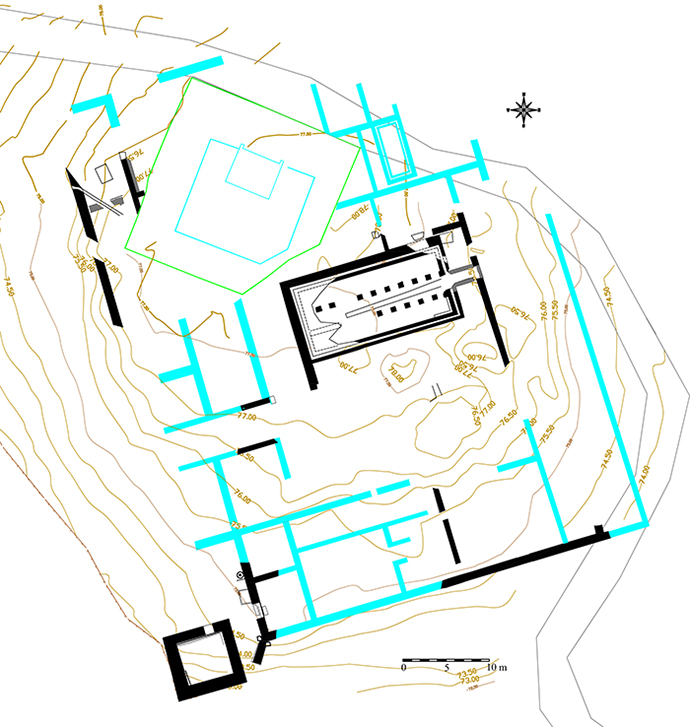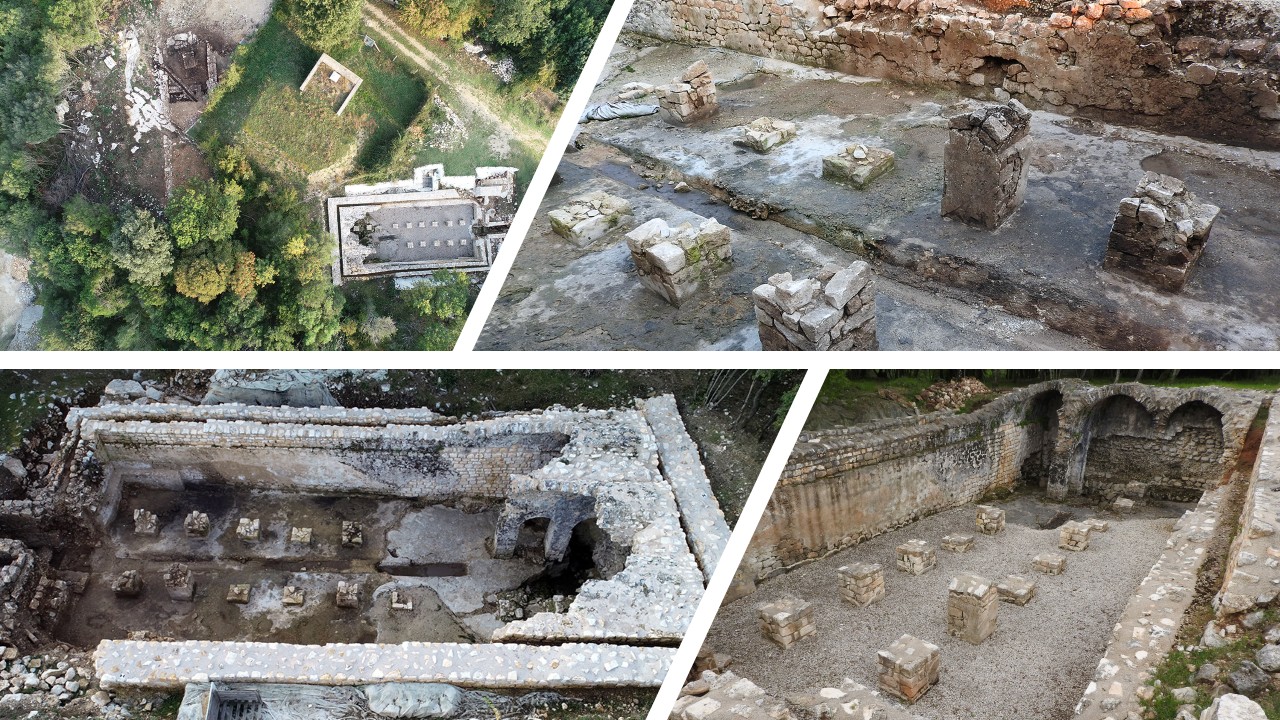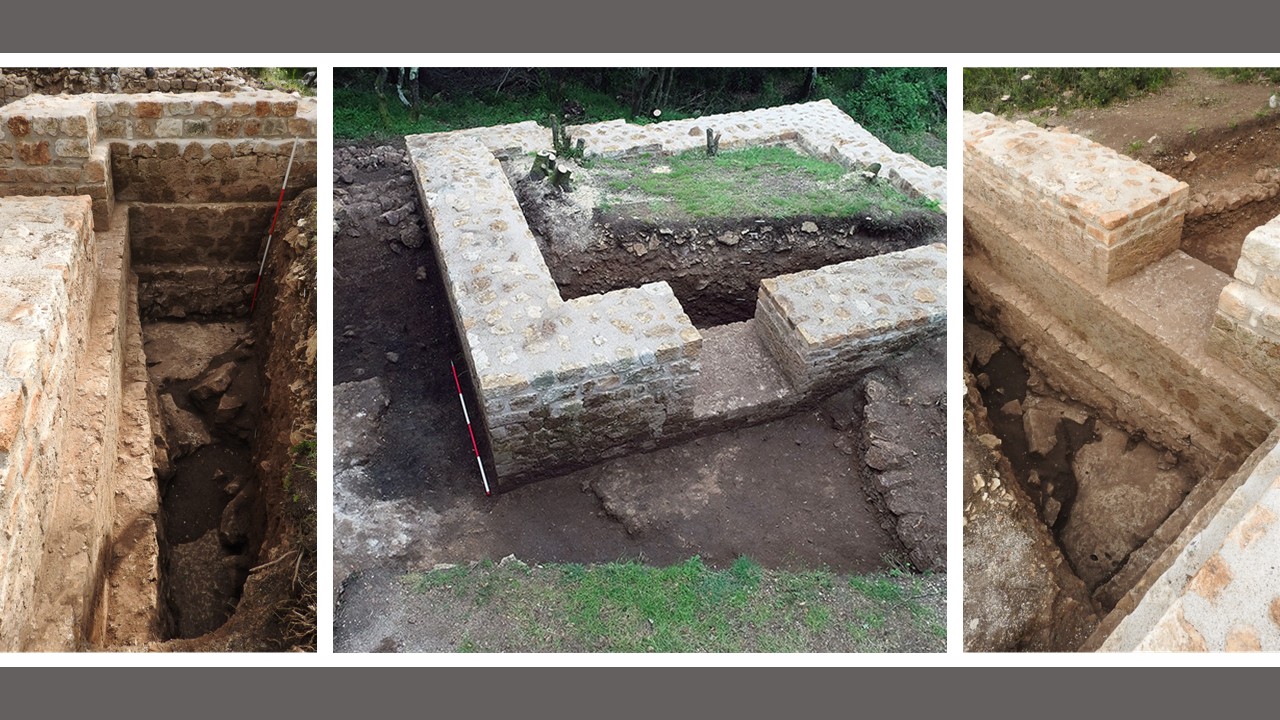The Monte Ricco site has been systematically archaeologically investigated since 2014 as part of several projects funded by the Croatian Science Foundation: Roman Age Transformation And Reuse Of Prehistoric Hillforts In Istria (2014–2018, led by Klara Buršić-Matijašić); The Archaeological Landscape in a Sustainable Development of Cultural Tourism in the Municipality of Vrsar (2018–2023, led by Robert Matijašić); and Roman Landscape and settlement dynamics of Istrian colonial agers (since 2023, led by Davor Bulić).
The morphological features of Monte Ricco Hill (elevation 78 m), located inland from Vrsar, approximately 1.3 km from the coastline, are characteristic of hillfort-type settlements. Such a settlement existed at the site during the Middle Bronze Age. After the abandonment of the Bronze Age settlement, the hilltop remained uninhabited for several centuries, until the second quarter or mid-1st century BCE, when a Roman rural settlement was established. This settlement continued to be occupied until the last decades of the 1st century CE, when it was abandoned.
The approximate floor plan of the Roman building can be reconstructed based on previous excavations and geophysical surveys. The Roman structure had a rectangular layout, likely with a central square courtyard surrounded on all four sides by rows of rooms. On the northern side of the courtyard, remains of a cistern have been identified, which was divided into three longitudinal vaulted aisles by two rows of pilasters.


Among the architectural elements identified so far, in addition to the cistern, particular attention is drawn to a square structure located in the southwestern part of the site, which deviates from the basic rectangular form of the architectural complex. The appearance of the structure, its dimensions, the thickness of its walls, and its placement within the overall architectural complex suggest that it belonged to a fortification, specifically a tower, whose purpose was to secure access to the western part of the complex, where a carriage entrance was located. Supporting this interpretation is the construction method, characterized by a compact, solid masonry structure that differs from the other known walls at the site. The presence of military activity at the site is further confirmed by the discovery of iron arrowheads found in the immediate vicinity of the tower, as well as nails associated with military tents.

The Roman rural architecture of Monte Ricco stands out among other Roman rural sites in Istria due to three key aspects: its location, its dating, and its fortification architecture. The settlement’s position on a prominent hill, at the site of a prehistoric hillfort, contrasts with the well-documented settlement patterns of the early Roman period, which show a tendency toward abandoning such elevated locations. Previously, Roman finds in the rural landscape of Istria dating to the mid-1st century BCE or earlier were known only from the far northwestern part of the peninsula, in present-day Slovenian Istria, and even then, from only two sites. The abandonment of Monte Ricco at the end of the 1st century CE also deviates from the pattern observed at similar sites in Istria, many of which exhibit a significantly longer continuity of occupation.
The early dating of the fortification structure represents a unique feature in the Roman rural architecture of the eastern Adriatic. While the fortification of Roman villas in Late Antiquity is a relatively well-documented phenomenon across the Empire, fortified rural buildings from the Late Republic are rare. One exception is the southern and southwestern part of the Iberian Peninsula. The first phase of the Roman occupation at Monte Ricco belongs to the second quarter or mid-1st century BCE, coinciding with or slightly predating the founding of the nearby colony of Parentium. The fortification elements and associated artifacts indicate that the site initially functioned as a military control point or observation post with a small garrison. However, after the establishment of Roman citizen colonies, when the landscape of the Istrian peninsula transformed with the construction of numerous villae rusticae, Monte Ricco underwent a functional shift and became a Roman villa.
 Pristupačnost
Pristupačnost

